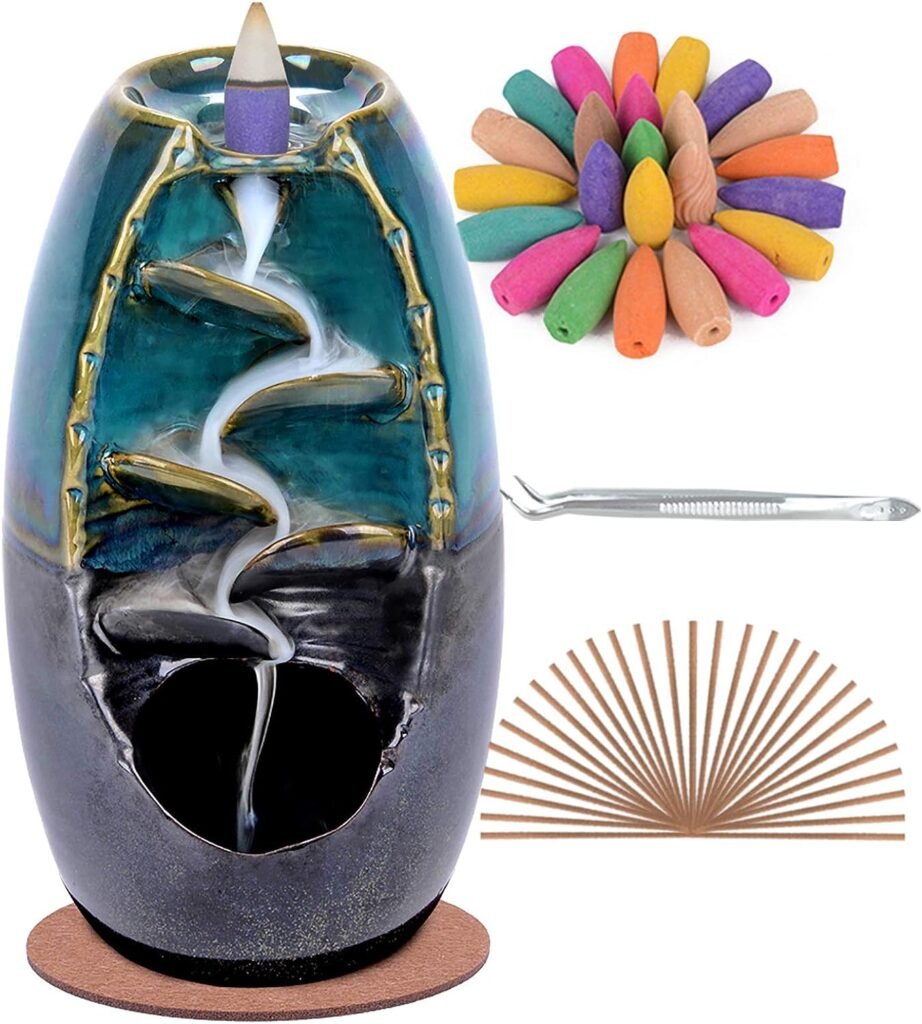Introduction
When it comes to backflow incense burners, the material used in their construction plays a significant role in their functionality and aesthetic appeal. Various materials offer distinct advantages and disadvantages, shaping the user’s experience in unique ways. In this chapter, we will delve into the four primary types of backflow incense burners: ceramic, metal, wooden, and resin.
Table of Contents
Do you know how to use a backflow burner?
Are you curious about how to use a backflow burner to create that mesmerizing cascade of smoke? Using one is not only simple but also deeply rewarding, adding a touch of serenity and visual appeal to your space. Learn the essential steps to set up and enjoy your burner to its fullest potential in our detailed guide. Read the full article here.
Disclaimer:
We earn a commission at no extra cost to you if you click a link and make a purchase
Ceramic Backflow Incense Burner
Ceramic backflow incense burners are the most traditional and widely used. Craftsmen often mold these burners with intricate designs, capturing the essence of ancient artistry. The ceramic material retains heat well, ensuring a consistent flow of smoke that gracefully cascades down the burner. However, ceramic is also fragile, so users must handle these burners with care to avoid chipping or breaking.
Metal Backflow Incense Burner
Metal backflow incense burners are durable and robust, designed to withstand the test of time. These burners usually feature simpler designs, focusing more on functionality than elaborate artistry. The metal material conducts heat quickly, allowing for an efficient burning process. On the downside, metal burners can get quite hot to the touch, so caution is advised during use.
Wooden Backflow Incense Burner
Wooden backflow incense burners are relatively rare and often combined with other materials like ceramic or metal for added durability. Artisans typically use hardwoods like oak or mahogany, carving intricate patterns that evoke a sense of natural beauty. The wooden elements contribute a rustic charm, but they are generally not used for the parts directly exposed to heat, due to the risk of charring or burning.
Resin Backflow Incense Burner
Resin backflow incense burners are lightweight and often feature intricate designs that can be more elaborate than those found in ceramic or metal burners. Artists can mold resin into complex shapes, allowing for a wide range of artistic expressions. The material is also less prone to heat damage compared to wood, making it a more versatile option. However, resin burners may not retain heat as well as their ceramic or metal counterparts, which could result in a less consistent smoke flow.
Dragon Backflow Incense Burner
Dragon backflow incense burners captivate with their intricate designs. They channel fragrant smoke to flow like a waterfall. The smoke curls around the dragon’s scales and wings, creating a mesmerizing display. It’s not just an incense burner; it’s a piece of art. These burners elevate the experience of aromatherapy, blending form and function seamlessly.
In summary
To sum up, each material brings its own pros and cons to the table in the world of backflow incense burners. Ceramics offer tradition and artistry, yet they break easily. Metals stand out for their durability and efficiency, but they can get hot. Woods provide a unique, rustic charm, often blending with other materials for durability. Resin impresses with its lightweight and intricate designs, although it may fall short in heat retention. These nuances guide your choice for the ideal backflow burner. Ultimately, aesthetics drive the final decision, especially when it comes to dragon incense burners, which combine form and function into a captivating display.
Disclaimer:
We earn a commission at no extra cost to you if you click a link and make a purchase























